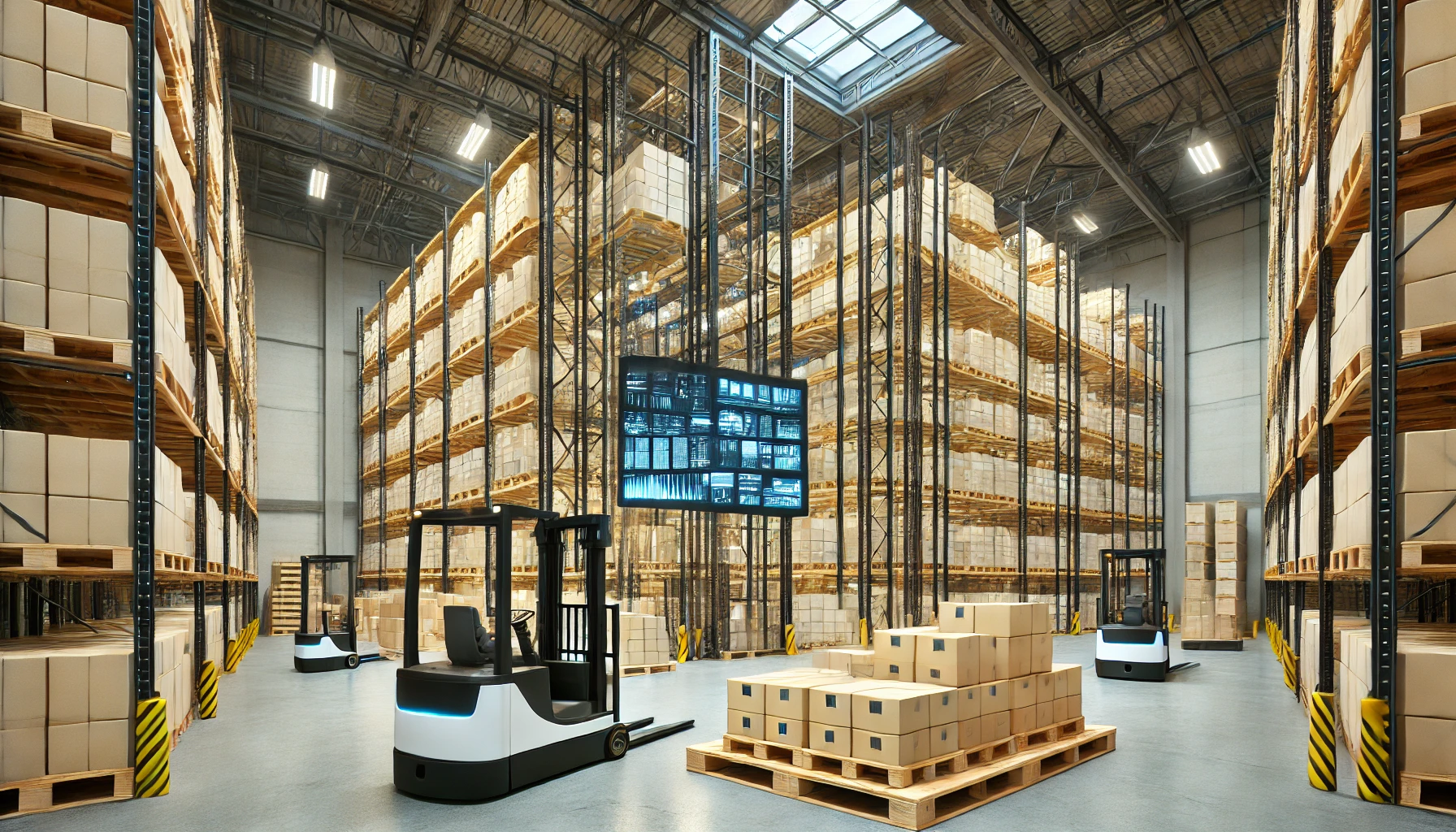
Beyond the Basics: Exploring the Complex Role of Wooden Pallets in Modern Warehousing
Wooden pallets have been a fundamental part of warehousing and logistics for decades. While they may seem like simple platforms for stacking goods, their impact on the supply chain is far-reaching. These unassuming structures contribute to operational efficiency, cost-effectiveness, sustainability, and even automation in modern warehousing.
In this comprehensive guide, we will explore how wooden pallets are more than just storage tools—they are essential to warehouse functionality, safety, and innovation.
1. The Evolution of Wooden Pallets in Warehousing
Origins and Early Use
Before wooden pallets, warehouses relied on manual labor to transport goods using crates, barrels, and sacks. This method was inefficient and prone to product damage. The advent of the forklift in the 1920s drove the need for a standardized platform that could be lifted and transported easily.
Transformation with Industrial Growth
As industrialization progressed, businesses required a uniform, durable, and reusable platform for moving large quantities of products. The introduction of standardized pallet sizes revolutionized warehousing, enabling goods to be stacked and transported in a more organized manner.
Current Trends in Pallet Technology
Today, wooden pallets are designed with precision, incorporating heat treatment for pest control, RFID tracking for inventory management, and hybrid designs that combine wood with other materials for enhanced durability.
2. The Structural Significance of Wooden Pallets
Design and Material Considerations
Wooden pallets are typically made from hardwood (oak, maple) or softwood (pine, spruce). Softwood is preferred for its lightweight and cost-effectiveness, while hardwood is used for heavy-duty applications.
Durability and Load-Bearing Capabilities
- Standard wooden pallets can support 2,500 – 4,600 pounds, depending on construction.
- Stringer pallets vs. block pallets:
- Stringer pallets use parallel wood boards for support.
- Block pallets have additional blocks, making them more durable.
Standardization for Global Supply Chains
Global trade relies on uniform pallet sizes. Some of the most common standards include:
- North America: 48” x 40” (GMA Standard)
- Europe: 47.2” x 31.5” (Euro Pallet)
- Asia: 43.3” x 43.3”
Standardization ensures compatibility with racking systems, forklifts, and shipping containers.
3. The Role of Wooden Pallets in Inventory Management
Improving Warehouse Organization
Warehouses use wooden pallets to:
✅ Create structured storage areas.
✅ Optimize space with vertical stacking.
✅ Categorize products by SKU, expiration date, or demand.
Reducing Product Damage
Goods stored on pallets avoid direct contact with the floor, preventing exposure to moisture, dirt, and pests. Proper stacking techniques further reduce product damage.
Enhancing Picking and Packing Efficiency
Pallets simplify the picking and packing process by enabling bulk movement. Forklifts can transport entire pallet loads instead of moving individual boxes, reducing labor costs.
4. Cost-Effectiveness and ROI of Wooden Pallets
Initial Investment vs. Long-Term Savings
Wooden pallets are cheaper than plastic or metal alternatives, with an average cost of $10 – $25 per pallet, depending on size and quality.
Repairability and Lifespan Considerations
Unlike plastic pallets, wooden pallets can be repaired multiple times, extending their lifespan to 3 – 7 years. Replacing damaged boards and nails costs significantly less than replacing an entire pallet.
Comparing Wooden Pallets to Alternative Materials
| Material | Cost | Lifespan | Pros | Cons |
|---|---|---|---|---|
| Wood | Low | 3-7 yrs | Repairable, biodegradable | Susceptible to moisture, splinters |
| Plastic | High | 10+ yrs | Durable, moisture-resistant | Expensive, non-repairable |
| Metal | Very High | 15+ yrs | Strong, fire-resistant | Heavy, high initial cost |
5. Sustainability and Environmental Impact
Recycling and Reusability of Wooden Pallets
- 95% of wooden pallets are recycled or repaired instead of discarded.
- End-of-life pallets are used for mulch, wood pellets, or furniture.
Carbon Footprint Reduction Strategies
- Companies use sustainably sourced wood to minimize deforestation.
- Pallet pooling programs (e.g., CHEP, PECO) reduce waste by reusing pallets across industries.
How Pallet Design Supports Circular Economy Models
Wooden pallets align with circular economy principles, where materials are continuously reused rather than discarded after one use.
6. Wooden Pallets and Automation Integration
Compatibility with Robotics and Conveyor Systems
Automated warehouses require pallets with uniform dimensions and weight distribution to function smoothly with robotic forklifts and conveyor belts.
RFID and Barcode Tracking on Pallets
Warehouses embed RFID chips and barcode labels to track pallets in real time, reducing errors and improving inventory visibility.
Challenges in Automating Wooden Pallet Handling
Unlike plastic pallets, wooden pallets have natural variations (e.g., rough textures, knots) that can disrupt robotic handling. However, AI-powered scanners are improving adaptability.
7. Safety Considerations in Warehousing Operations
Preventing Workplace Injuries
- Employees must use gloves and proper lifting techniques when handling wooden pallets.
- Damaged pallets with protruding nails or splinters should be removed immediately.
Fire Risks and Safety Compliance
- Warehouses must follow fire safety regulations, ensuring adequate sprinkler coverage over stacked pallets.
- Fire-retardant pallet coatings can reduce risk.
Best Practices for Pallet Inspection and Maintenance
- Regular inspections identify cracks, loose nails, and weakened boards.
- Implement a pallet replacement policy to retire unsafe pallets.
8. Global Supply Chain Implications
International Shipping and Compliance Standards
Wooden pallets used for export must comply with ISPM-15 regulations, requiring:
✅ Heat treatment (HT) to kill pests.
✅ Fumigation (MB – Methyl Bromide) for certain shipments.
Trade Regulations and Phytosanitary Concerns
Many countries prohibit untreated wooden pallets due to pest contamination risks, enforcing strict import regulations.
9. Innovations in Wooden Pallet Design
Lightweight vs. Heavy-Duty Wooden Pallets
Lightweight pallets reduce shipping costs, while heavy-duty pallets handle bulk loads like machinery and industrial goods.
Hybrid Pallets: Combining Wood with Other Materials
Some pallets integrate plastic reinforcements for moisture resistance or steel reinforcements for added strength.
Future Trends in Smart Pallets and IoT Integration
- IoT-enabled pallets with temperature sensors monitor perishable goods.
- GPS tracking enhances supply chain transparency.
Conclusion
Wooden pallets are more than just a simple logistics tool—they are a critical component of modern supply chains. Their affordability, adaptability, and sustainability make them indispensable in warehousing and distribution. As automation and IoT technology evolve, wooden pallets will continue to play a crucial role in warehouse efficiency.





Add a comment